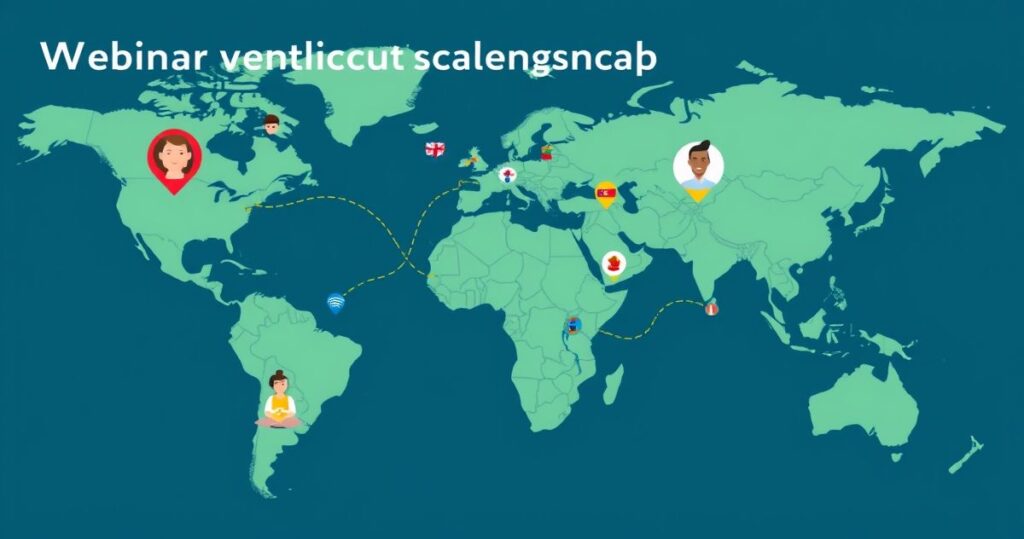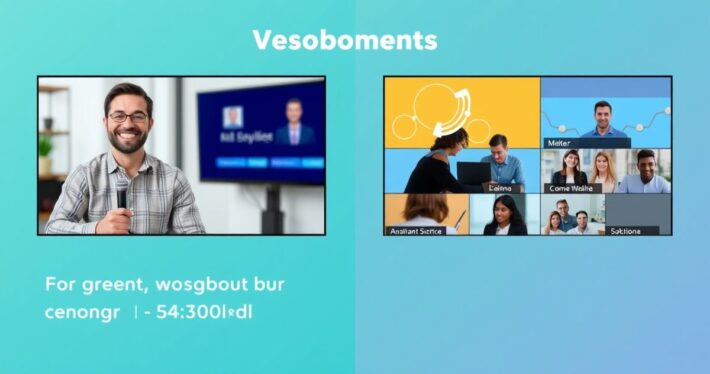Scaling your webinar content for cultural relevancy worldwide.

Webinars are a powerful tool for connecting with audiences, but when your audience spans the globe, cultural relevancy becomes non-negotiable. What works in one region might fall flat—or even offend—in another. Scaling your webinar content for cultural relevancy isn’t just about translating language; it’s about understanding nuances, values, and preferences. So, how do you create webinars that resonate worldwide? Let’s dive in.
Why Cultural Relevancy Matters in Webinars
Think of your webinar as a conversation. If you’re speaking a language your audience doesn’t understand—literally or culturally—the message gets lost. Cultural relevancy ensures your content aligns with local customs, values, and expectations. For instance, humor that lands in the U.S. might confuse or even offend audiences in Japan. Similarly, a direct sales approach might work in Western cultures but could be seen as pushy in more relationship-oriented markets like Latin America.
I’ve seen companies invest thousands in flashy webinar setups only to see low engagement simply because they didn’t account for cultural differences. It’s not just a missed opportunity; it’s a waste of resources.
Step 1: Research Your Target Markets
The first step in scaling webinar content for cultural relevancy is understanding your audience. Start by researching:
- Cultural norms: What’s considered polite or taboo?
- Communication styles: Are they direct or indirect? Formal or informal?
- Local challenges: What pain points are unique to their region?
- Preferred formats: Do they prefer live Q&A, pre-recorded sessions, or interactive polls?
For example, if you’re targeting Germany, you’ll find that audiences appreciate data-driven, structured content. In contrast, Indian audiences might favor storytelling and emotional connections.
Step 2: Use AI-Powered Tools for Localization
Localization goes beyond translation. It’s about adapting your content to feel native to each region. AI-powered tools like our Slide Outline Creator can help you craft culturally relevant presentations. Here’s how:
- Language nuances: AI can suggest phrases that resonate better in specific regions.
- Visual design: Colors, symbols, and imagery can have different meanings worldwide. For instance, red signifies luck in China but danger in the U.S.
- Content tone: AI can help adjust the tone to match cultural preferences.
I once worked on a webinar for a tech company targeting both the U.S. and Japan. By using these tools, we tailored the presentation to highlight community impact for Japan, while focusing on innovation for the U.S. The result? A 40% increase in engagement.
Step 3: Structure Offers for Global Appeal
Your Webinar Offer Builder is invaluable here. It’s not enough to create a compelling offer; it must also align with local buying behaviors. For example:
- Pricing: Adjust pricing structures to fit local economic conditions. In developing markets, tiered pricing or installment plans can be more effective.
- Value perception: Highlight benefits that matter most to each region. For instance, sustainability might be a key selling point in Europe, while affordability could be a priority in Southeast Asia.
Step 4: Create Culturally Relevant Bonuses
Bonuses can be a game-changer, but they must feel relevant. Our High-Value Bonus Brainstormer helps generate ideas that resonate. For example:
- In Brazil, offering exclusive access to a local influencer might boost conversions.
- In France, a bonus workshop on mastering a niche skill could be more appealing than a discount.
Step 5: Adapt Risk Reversal Strategies
Guarantees are universal, but how you frame them matters. Our Risk-Reversal/Guarantee Generator helps craft guarantees that feel safe and familiar. For instance:
- In the U.S., a 30-day money-back guarantee is standard.
- In Japan, offering a ‘satisfaction guarantee’ with clear steps for resolution builds trust.
Real-World Example: Scaling a Webinar Across 5 Regions
One of my favorite success stories involves a SaaS company that wanted to scale its lead-generation webinar globally. Here’s what they did:
- Research: Identified key cultural differences in their top 5 regions.
- Localization: Adapted the content using AI tools for language, visuals, and tone.
- Offers: Tailored pricing and bonuses for each market.
- Guarantees: Crafted risk-reversal strategies that felt familiar to each audience.
The result? A 60% increase in conversions and a 25% boost in attendance across all regions.
Common Pitfalls to Avoid
Scaling webinar content isn’t without challenges. Here are some common mistakes I’ve seen:
- Overgeneralization: Assuming all Asian markets are the same is a recipe for disaster.
- Ignoring feedback: Audience feedback is gold. Use it to refine your approach.
- Overloading content: Too much information can overwhelm. Keep it focused and engaging.
The Future of Culturally Relevant Webinars
As technology evolves, so do opportunities for personalization. AI is making it easier than ever to scale content while maintaining cultural authenticity. Imagine a webinar that dynamically adjusts its tone, visuals, and offers based on the viewer’s location. We’re already seeing glimpses of this, and it’s only going to get better.
Final Thoughts
Scaling webinar content for cultural relevancy isn’t just a nice-to-have; it’s a must if you want to succeed globally. By understanding your audience, leveraging AI tools, and tailoring your approach, you can create webinars that resonate deeply and drive results.
Now, here’s a question to ponder: What’s one cultural insight about your target audience that could transform your next webinar?



